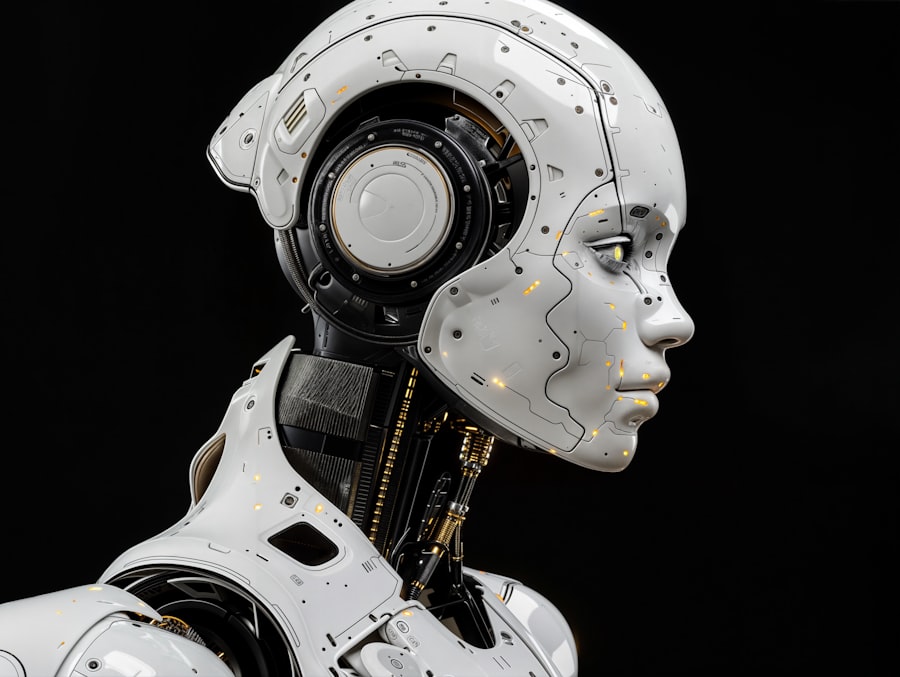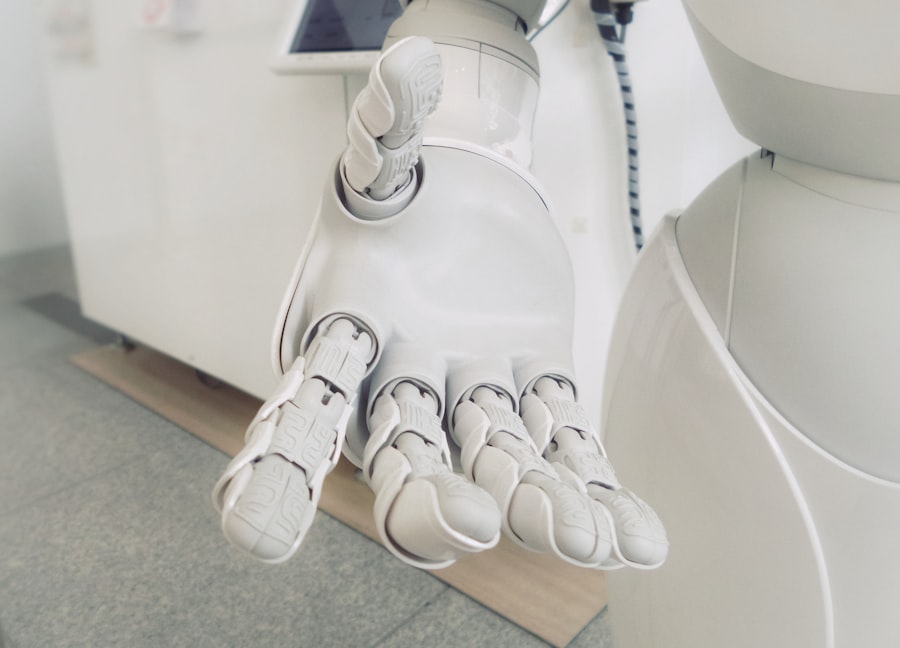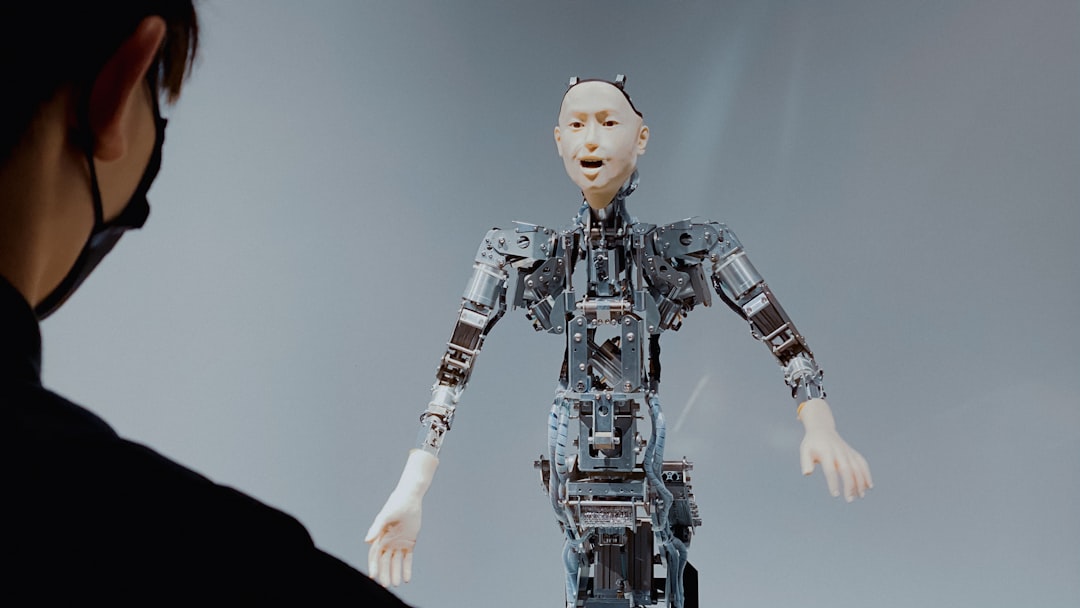As you navigate through the complexities of modern society, you may find yourself pondering the role of machines in your daily life. The debate surrounding the replacement of human labor with machines has gained significant traction in recent years, fueled by rapid advancements in technology. On one hand, proponents argue that machines can enhance productivity and efficiency, while on the other hand, critics raise concerns about the potential loss of jobs and the erosion of human skills.
This ongoing discussion invites you to consider not only the immediate implications of automation but also its long-term effects on society as a whole. In this article, you will explore the multifaceted nature of this debate. You will delve into the advantages and disadvantages of machines replacing humans, examining how this shift impacts employment, the economy, and ethical considerations.
As you reflect on these issues, you will also consider the quality and consistency of work produced by machines compared to that of humans, as well as the importance of human creativity and innovation in an increasingly automated world. Ultimately, you will be encouraged to think critically about the balance that must be struck between embracing technological advancements and preserving the essential qualities that make us human.
Key Takeaways
- The debate over machines replacing humans in the workforce is a complex and ongoing discussion with various perspectives.
- Advantages of machines replacing humans include increased efficiency, productivity, and cost savings for businesses.
- Disadvantages of machines replacing humans include job displacement, loss of human touch, and potential social and economic inequality.
- The impact on employment and the economy is significant, with potential for job loss and shifts in the labor market.
- Ethical considerations, quality and consistency of work, human creativity and innovation, dependence on technology, potential for error and malfunction, and the role of humans in supervision and maintenance all play a crucial role in finding a balance between machines and humans in the workforce.
Advantages of Machines Replacing Humans
One of the most compelling arguments in favor of machines replacing humans is the significant increase in efficiency that automation can bring. When you think about it, machines can perform repetitive tasks with remarkable speed and precision, often surpassing human capabilities. This efficiency not only leads to higher productivity but also allows businesses to allocate resources more effectively.
For instance, in manufacturing settings, robots can work around the clock without fatigue, ensuring that production lines operate smoothly and meet consumer demands without interruption. Moreover, machines can help reduce operational costs for businesses. By automating tasks that would typically require a human workforce, companies can save on labor expenses, which can then be reinvested into other areas of growth.
This financial flexibility can lead to lower prices for consumers and increased competitiveness in the market. As you consider these advantages, it becomes clear that machines have the potential to drive economic growth and innovation in ways that were previously unimaginable.
Disadvantages of Machines Replacing Humans

Despite the numerous advantages that machines offer, there are significant drawbacks to consider as well.
As you observe industries increasingly adopting automation, it becomes evident that many workers may find themselves out of work or forced to transition into roles that require different skill sets.
This shift can lead to economic instability for individuals and communities, particularly in regions heavily reliant on traditional manufacturing jobs. Additionally, the reliance on machines can lead to a devaluation of human labor. When you think about it, if machines can perform tasks more efficiently than humans, there may be less incentive for employers to invest in their workforce.
This could result in a decline in wages and job security for many workers. As you reflect on these disadvantages, it is essential to recognize that while machines can enhance productivity, they also pose significant challenges that must be addressed to ensure a fair and equitable transition for all.
Impact on Employment and the Economy
| Metrics | Impact |
|---|---|
| Unemployment Rate | Increased due to job losses |
| GDP Growth | Decreased as economic activity slows down |
| Business Closures | Rise in the number of businesses shutting down |
| Consumer Spending | Decline in purchasing power and demand |
The impact of machines replacing humans extends far beyond individual job loss; it has profound implications for the economy as a whole. As you consider this issue, it’s important to recognize that automation can lead to both job creation and destruction. While certain roles may become obsolete, new opportunities may arise in fields such as technology development, maintenance, and oversight of automated systems.
However, these new jobs often require specialized skills that not all displaced workers possess, leading to a skills gap that can exacerbate unemployment rates. Furthermore, as automation becomes more prevalent, you may notice shifts in consumer behavior and spending patterns. With increased efficiency and lower production costs, businesses may pass savings onto consumers through lower prices.
This could stimulate demand for goods and services, potentially leading to economic growth. However, if a significant portion of the population is unemployed or underemployed due to automation, this growth may not be sustainable. As you contemplate these dynamics, it becomes clear that finding a balance between technological advancement and workforce stability is crucial for fostering a healthy economy.
Ethical Considerations
As you delve deeper into the debate surrounding machines replacing humans, ethical considerations come to the forefront. One pressing question is whether it is morally acceptable to prioritize efficiency over human employment. You may find yourself grappling with the implications of a society where machines take precedence over people, particularly when it comes to vulnerable populations who may struggle to adapt to rapid changes in the job market.
Moreover, there are concerns about accountability when machines make decisions that impact human lives. For instance, in industries such as healthcare or law enforcement, the use of algorithms and automated systems raises questions about bias and fairness. As you reflect on these ethical dilemmas, it becomes evident that society must establish guidelines and regulations to ensure that technology serves humanity rather than undermines it.
Quality and Consistency of Work

When considering the role of machines in replacing humans, one cannot overlook the quality and consistency of work produced by automated systems. Machines excel at performing repetitive tasks with precision and uniformity, which can lead to higher quality outputs in certain contexts. For example, in manufacturing processes where consistency is paramount, machines can produce identical products with minimal variation.
However, while machines may excel in consistency, they often lack the nuanced understanding and adaptability that humans bring to their work. You might recall instances where human intuition and creativity have led to innovative solutions or improvements in processes that machines simply cannot replicate. As you weigh these factors, it becomes clear that while machines can enhance quality in specific areas, they cannot fully replace the unique contributions that humans make in terms of creativity and problem-solving.
Human Creativity and Innovation
As you contemplate the future landscape shaped by automation, it’s essential to consider the irreplaceable role of human creativity and innovation. While machines can process data and execute tasks efficiently, they lack the ability to think outside the box or generate original ideas. You may find yourself reflecting on how many groundbreaking inventions and artistic masterpieces have emerged from human imagination rather than mechanical processes.
In fields such as art, literature, and design, human creativity is not just an asset; it is a defining characteristic that sets us apart from machines. As you observe advancements in artificial intelligence and machine learning, it becomes evident that while these technologies can assist in creative endeavors, they cannot replicate the depth of human experience or emotion that fuels true innovation. This distinction highlights the importance of preserving opportunities for human creativity even as automation becomes more prevalent.
Dependence on Technology
As you navigate an increasingly automated world, it’s crucial to consider the implications of growing dependence on technology. While machines can enhance efficiency and productivity, an overreliance on them may lead to vulnerabilities in various sectors. For instance, if critical systems fail or experience malfunctions due to unforeseen circumstances or cyberattacks, entire industries could be brought to a standstill.
Moreover, as you become more accustomed to relying on technology for everyday tasks, there is a risk of diminishing your own skills and capabilities. You might find yourself questioning whether your problem-solving abilities or critical thinking skills are being compromised by an overreliance on automated systems. This dependence raises important questions about resilience and adaptability in a rapidly changing world.
Potential for Error and Malfunction
While machines are often lauded for their precision and reliability, they are not infallible. As you consider the potential for error and malfunction in automated systems, it’s essential to recognize that even minor glitches can have significant consequences. In industries such as healthcare or transportation, errors caused by malfunctioning equipment can jeopardize lives and safety.
Furthermore, as you reflect on the increasing complexity of automated systems, it becomes clear that troubleshooting these issues often requires human intervention. While machines may handle routine tasks efficiently, they still rely on skilled individuals to oversee their operation and address any problems that arise. This reality underscores the importance of maintaining a skilled workforce capable of managing technology effectively.
The Role of Humans in Supervision and Maintenance
In an era where machines are taking on more responsibilities traditionally held by humans, your role as a supervisor or maintainer becomes increasingly vital. While automation can streamline processes and enhance efficiency, it cannot operate independently without human oversight. You may find yourself reflecting on how your expertise is essential for ensuring that automated systems function optimally.
Moreover, as technology continues to evolve at a rapid pace, ongoing training and education will be necessary for individuals tasked with supervising automated systems. You might consider how investing in workforce development can empower individuals to adapt to changing job requirements while also fostering a culture of innovation within organizations.
Finding a Balance
As you conclude your exploration of the debate surrounding machines replacing humans, it becomes evident that finding a balance is crucial for navigating this complex landscape. While automation offers undeniable advantages in terms of efficiency and productivity, it also presents significant challenges related to employment, ethics, and human creativity. To create a future where technology serves humanity rather than undermines it, society must prioritize collaboration between humans and machines.
By embracing technological advancements while also investing in workforce development and ethical considerations, you can help shape a world where both humans and machines thrive together. Ultimately, striking this balance will require thoughtful dialogue and proactive measures to ensure that progress benefits everyone involved.
In the ongoing debate about whether machines should replace humans in various sectors, it’s crucial to consider the implications on economic growth and wealth distribution. An insightful article that delves into the broader economic impacts of automation and technological advancement can be found on How Wealth Grows. This article explores how the integration of machines in the workforce could potentially reshape economic landscapes and influence wealth creation. For a deeper understanding of these dynamics, you can read more about it here.
FAQs
What are the advantages of machines replacing humans?
Machines can work continuously without breaks, reducing downtime and increasing productivity. They can also perform tasks that are dangerous or physically demanding for humans.
What are the disadvantages of machines replacing humans?
Replacing humans with machines can lead to job loss and unemployment. It can also result in a loss of human touch and creativity in certain tasks.
What industries are most affected by machines replacing humans?
The manufacturing and production industries are most affected by machines replacing humans, as automation technology continues to advance.
How can machines and humans work together effectively?
Machines and humans can work together effectively by focusing on tasks that play to each other’s strengths. Humans can oversee and manage the machines, while machines can handle repetitive or dangerous tasks.
What are the ethical considerations of machines replacing humans?
Ethical considerations of machines replacing humans include the impact on employment, the potential for inequality, and the need to ensure that machines are used responsibly and ethically.
What are the potential risks of relying too heavily on machines to replace humans?
Risks of relying too heavily on machines to replace humans include a loss of human skills and expertise, over-reliance on technology, and potential security vulnerabilities.
